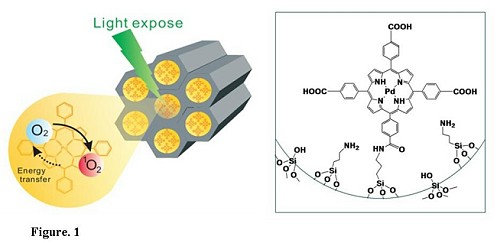NHRI Communications

院務紀事
98年度學術成就獎頒獎典禮報導
NHRI Presents 2009 Research Achievement Awards
 本院98年度學術成就獎頒獎典禮於7月21日2009 NHRI Research Day中舉行,本年度傑出學術成就獎獲獎人為分子與基因醫學研究組蔡世峰研究員,年輕學者學術成就獎獲獎人有3位,分別為:生物技術與藥物研究組伍素瑩副研究員、群體健康科學研究所生物統計與生物資訊研究組邱燕楓副研究員及醫學工程研究組羅履維副研究員,獲獎人之重要學術成就介紹,請參閱電子報第307期、電子報第308期、電子報第309期及電子報第310期。
本院98年度學術成就獎頒獎典禮於7月21日2009 NHRI Research Day中舉行,本年度傑出學術成就獎獲獎人為分子與基因醫學研究組蔡世峰研究員,年輕學者學術成就獎獲獎人有3位,分別為:生物技術與藥物研究組伍素瑩副研究員、群體健康科學研究所生物統計與生物資訊研究組邱燕楓副研究員及醫學工程研究組羅履維副研究員,獲獎人之重要學術成就介紹,請參閱電子報第307期、電子報第308期、電子報第309期及電子報第310期。 頒獎儀式由伍焜玉院長致詞後揭開序幕,頒發傑出學術成就獎獎金新台幣貳拾萬元整及獎座乙只,年輕學術成就獎每人獎金新台幣拾萬元整及獎座乙只,以茲鼓勵。頒獎典禮結束後,緊接著進行獲獎人之專題演講,其精采之演說獲得與會人員熱烈討論及迴響。
頒獎儀式由伍焜玉院長致詞後揭開序幕,頒發傑出學術成就獎獎金新台幣貳拾萬元整及獎座乙只,年輕學術成就獎每人獎金新台幣拾萬元整及獎座乙只,以茲鼓勵。頒獎典禮結束後,緊接著進行獲獎人之專題演講,其精采之演說獲得與會人員熱烈討論及迴響。演講摘要如下:
Genomic Medicine—Moving to the Next Phase
Dr. Shih-Feng Tsai,
Division of Molecular and Genomic Medicine
We have taken a sequence-based approach to investigate three general areas of human diseases: inherited disorders, bacterial infections, and cancers. Over the past decade, we have mapped the gene location of familial form of avascular necrosis of the femoral head to chromosome 12 and identified type II collagen mutations. Taking a similar approach, we have conducted genetic analysis and mapped a subset of familial primary cutaneous amyloidosis (FPCA) to chromosome 5. Subsequently, John McGraph's group in London identified Oncostatin M receptor (OSMR) mutations in two pedigrees, and we confirmed OSMR and another IL6 receptor gene family member, IL31, mutations from our large family collection. Currently, we are analyzing and establishing cell culture and animal models to investigate the pathophysiology mechanisms of these genetic disorders, and hopefully, developing new therapeutics in the near future. As genomic medicine moving to the "next-gen" era, we are also developing new approaches to study microbial genomics and cancer genomics, using the highly parallel, powerful technology of the Roche/454 and Illumina/Solexa systems. A snapshot of the progress on these studies will also be presented at the Research Day.
Structure-Based Drug Design of Anti-Diabetics and Anti-Cancer Drugs
Dr. Su-Ying Wu
Division of Biotechnology and Pharmaceutical Research
(1) Structure-based drug design of anti-diabetics drugs
Peroxisome proliferator-activated receptorγ (PPARγ) is a valid drug target for the treatment of type II diabetics. The structure-based virtual screening, a method that combines shape-based database search with a docking study and analogue search, has been employed to discover a novel family of PPARγ agonists based upon pyrazol-5-ylbenzenesulfonamide. Two analogues in the family show high affinity for, and specificity to, PPARγ with the most potent one showing IC50 of 22.7nM. Both analogues function as partial agonists. They also demonstrate glucose-lowering efficacy in vivo. A structural biology study reveals that they both adopt a distinct binding mode and have no H-bonding interactions with PPARγ. Moreover, the structural biology and computer docking studies reveal the specificity of the compounds for PPARγ could be due to the restricted access to the binding pocket of other PPAR subtypes, i.e. PPARα and PPARδ, and steric hindrance upon the ligand binding.
(2) Structure-based drug design of anti-cancer drugs
Aurora kinases are attractive targets for the anti-cancer drug discovery. Aurora A and B play an important role in mitosis by regulating centrosome function and cytokinesis. The structure-based virtual screening, a method that combines computer modeling study and constraint docking study, was applied to discover a novel pyrazole lead compound (compound 1) with IC50 of 15μM against Aurora A. Structural insights obtained through X-ray co-crystal studies of lead compound suggested the modification of C-4 position ethyl carboxylate side chain for improving potency. Bioisosteric replacement of the ester with amide linkage and changing the ethyl substituent to 3-acetamido-phenyl ring, led to the identification of the potent inhibitor (compound 2) with a 450-fold improvement in Aurora A inhibition potency compared to the initial hit.
Incorporation of Covariates into Multipoint Linkage Disequilibrium Mapping in Case-Control Studies
Dr. Yen-Feng Chiu
Division of Biostatistics and Bioinformatics, Institute of Population Health Sciences,
Case-control designs are commonly adopted in genetic epidemiological studies because they are cost effective and offer powerful tests for genetic and environmental risk factors, as well as their interactions. However, concerns often rise about case-control designs including possible false positives or bias due to confounders, heterogeneity or interactions among genes and between genes and environments. The present study develops a robust multipoint fine-mapping approach to incorporate covariates into the association mapping of case-control designs. Incorporating quantitative or qualitative covariates into this fine mapping through parametric and non-parametric modeling makes it possible to assess or account for main covariate effects and gene-covariate interaction effects while localizing the disease locus. Simulation results indicate that the efficiency in estimating the disease locus increases considerably when incorporating a covariate associated with the disease. This is especially true when the genetic effect of the disease locus is small. The proposed approach was applied to a case-control study of diabetes. It shows that a strong association between diabetes and a candidate gene, SCL2A10, was detected for the non-obese patients, whereas no evidence was found for either the obese patients or the whole sample when analyzed together. Additionally, the genome-wide association study (GWAS) of rheumatoid arthritis (RA) released for genetic analysis workshop (GAW) 16 was used to illustrate the application of this approach. Simulation studies and these data both demonstrate that with the incorporation of covariates, the proposed method can not only improve efficiency in estimating disease loci, but also elucidate the etiology of a complex disease.
Functionalization of Silica-Nanoparticles for Cancer Theranostics
Dr. Leu-Wei Lo
Division of Medical Engineering Research
Theranostics, a term that reflects the dual therapeutic and diagnostic utility of a compund or methodolgy, have emerged as an important concept in the contemporary design of nanotechnology-based molecular imaging contrast agents and imaging-guided therapeutics. In particular, the enhanced permeability of tumor vasculature and the identification of novel cancer markers that facilitate retention of i.v.-administered nanoparticles within tumor have led to the recent development of a wide range of nano- contrast agents and therapeutics that include gold nanoparticles, liposomes, polymeric nanoparticles, and mesoporous silica materials (termed mesoporous silica nanoparticles or MSNs) that serve as a matrix in which high densities of transportable molecules reside, shielded from their local environment. In the presentation, we covalently conjugated the photosensitizer (PS) Pd-porphyrin onto the surface of MSNs nanochannels and evaluated their photodynamic therapy (PDT) potential in the treatment of breast cancer, both in vitro and in vivo. In terms of the unique structure of MSNs containing separated reserviors, the multiple intra-MSNs functionalities were deployed; the possibility of using MSNs as the PS carriers for two photon excition (TPE)-PDT was also explored. Pd-porphyrin is a synthetic metallo-porphyrin with long phosphorescence lifetime and is well known in use for quantitative in vivo oxygen sensing and imaging. With its conjugation to MSNs, we extend the functionality of Pd-porphyrins from their original "diagnostics" role in oxygen sensing and imaging to the "therapeutics" one in PDT (Figure1).

《文/圖:學發處蔡雨軒;左圖為蔡世峰研究員與伍院長合影;右圖為邱燕楓副研究員與伍院長合影》